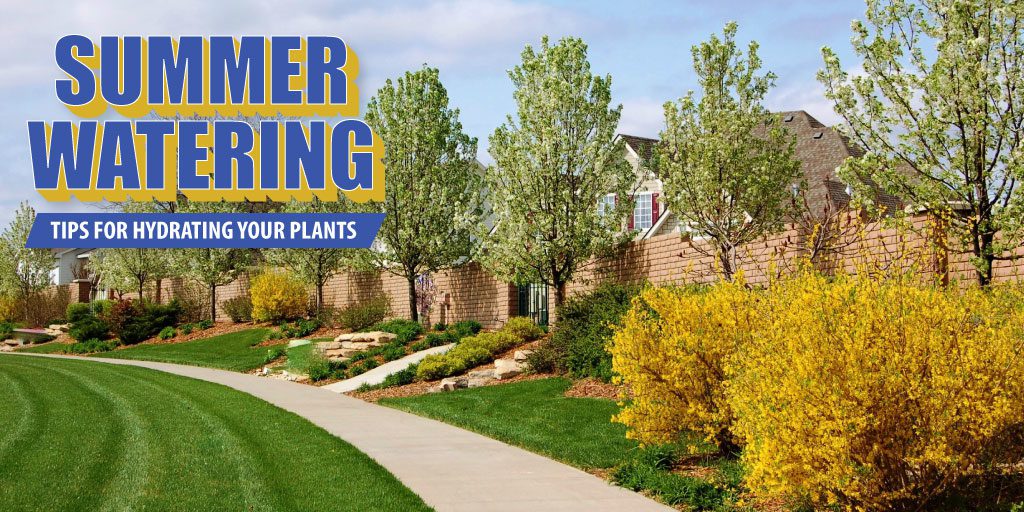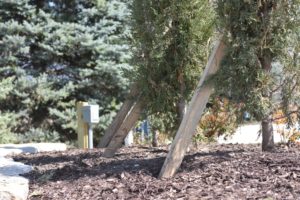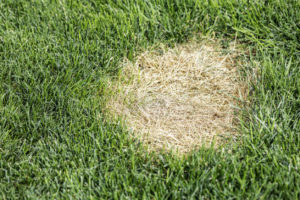Watering is a simple, yet absolutely necessary part of caring for your trees, shrubs, and lawn. As the weather heats up, sometimes an irrigation system just won’t cut it for those new plants. If you want to make sure that your new plants thrive and become a beautiful, sturdy feature in your landscaping, you’re going to have to pay special attention and get them the water they need.
Here at Lawrence Landscape, we understand that caring for new plant materials can be a daunting task. Our experts have compiled a list of watering tips and tricks to ensure that any new additions to your yard receive the care that they need.
Check the soil:
It’s impossible to gauge the moisture level of soil simply by looking at it. Using your finger, poke a hole near the base of the new plant material. If it’s dry 2-3 inches down or it resists being punctured, it could use a drink. Dry soil can kill small roots and decrease a plant’s ability to absorb water.
How to water:
Any hose or nozzle will work for getting your trees and shrubs the correct amount of water. A slow, steady stream of water, lasting 10-15 minutes should do the trick. Be sure to focus the water on the roots and base, because the leaves and limbs have no need for it!
When to water:
Deep, periodic watering is the best way for your trees and shrubs to thrive! If your plant materials are already established, watering once a week is best during during the hotter months, especially in June, July, and August. If your plant material is new to the landscape, watering should occur more often. It’s vital to keep the soil moist during the first month, to encourage growth and establishment.
The best time to water is in the early morning, before the hot sun can start the evaporation process. Evening watering is the second best option, but be wary! Too much water in the evening can cause harmful fungus/bacteria to grow, since the soil retains moisture longer in the cool temperatures.
Utilize mulch:
Mulch placed around the base of plants will help to reduce runoff and retain soil moisture. Placing mulch 3-4” deep around the base allows the plant to use the water more effectively. It helps to reduce water runoff and retains soil moisture. Mulch also limits weed growth, which can compete for water usage!




